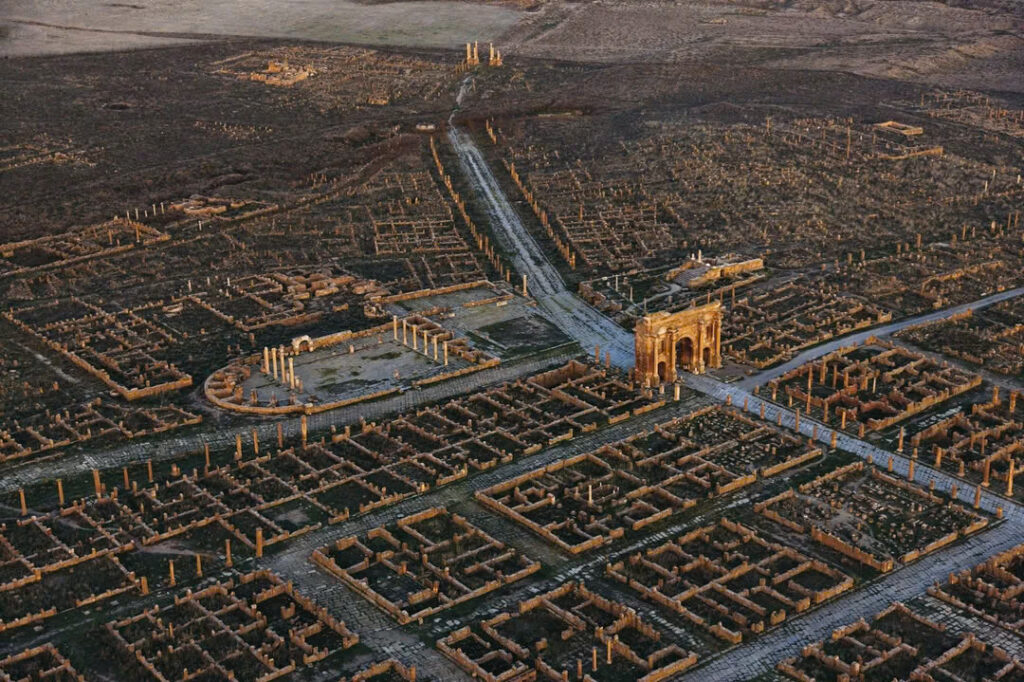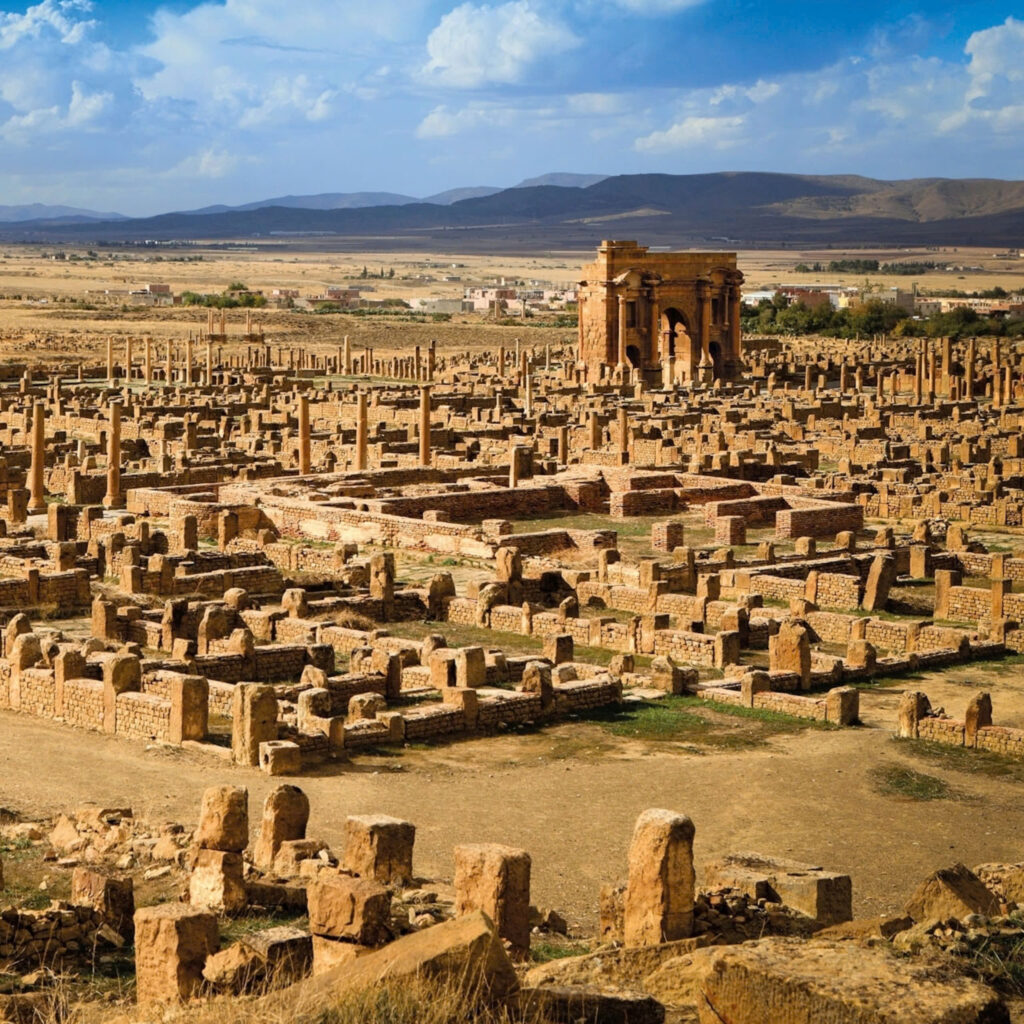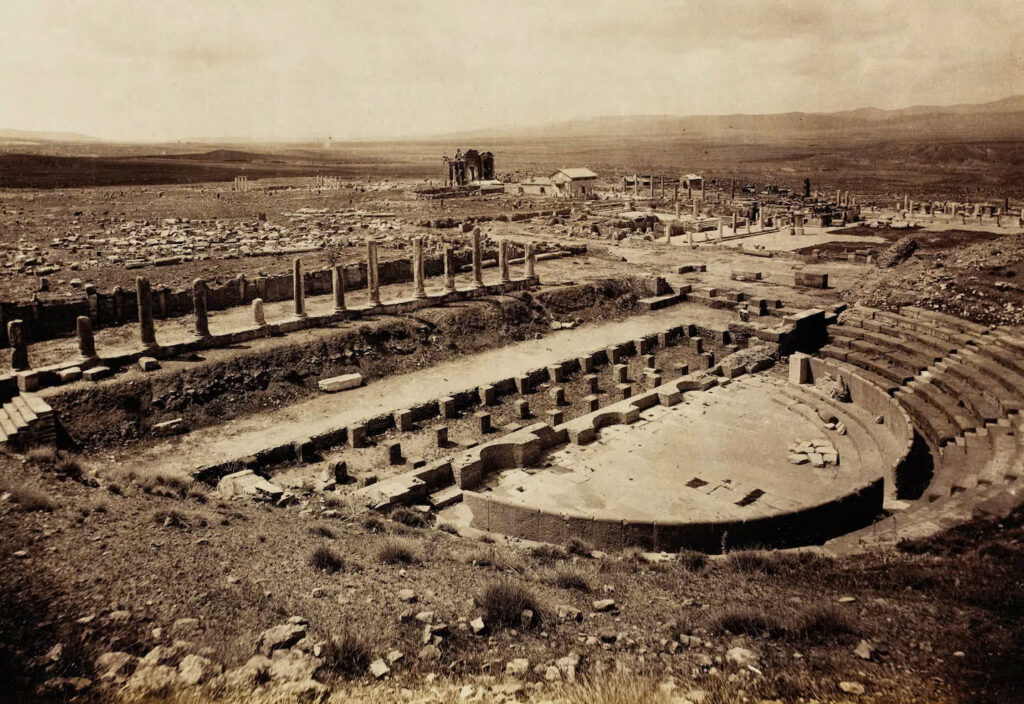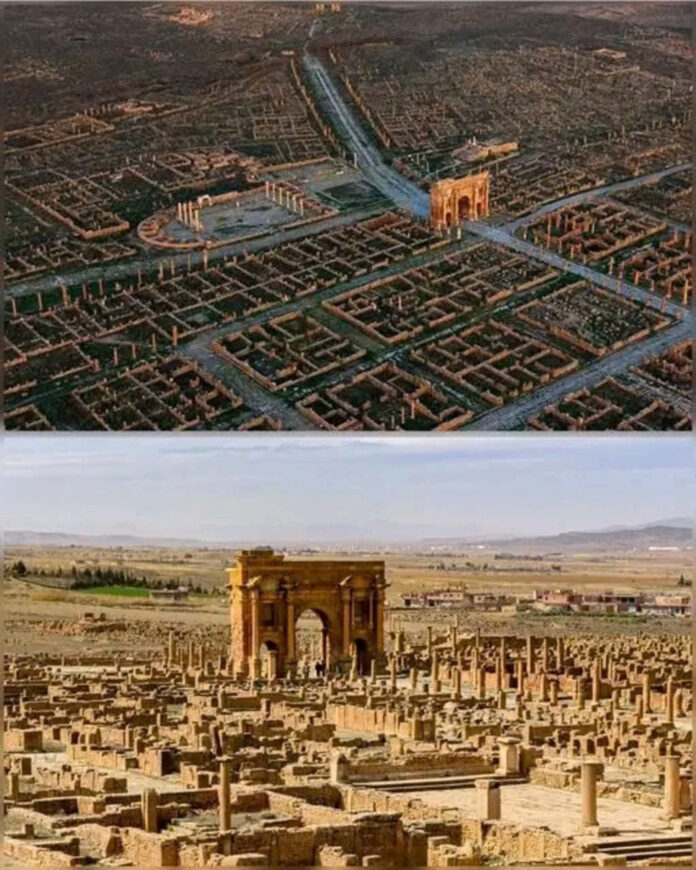In the heart of present-day Algeria lies one of North Africa’s most captivating archaeological treasures – the ancient Roman city of Thamugadi. Built during Emperor Trajan’s reign around 100 AD, this remarkable city stands as a testament to Roman ingenuity and raises intriguing questions about its mysterious abandonment.
A City Built for Greatness

Thamugadi wasn’t just another Roman outpost; it was a masterpiece of urban planning. With its perfectly symmetrical grid of streets, magnificent arches, and public spaces, the city embodied Roman architectural excellence. At its heart stood a bustling forum, surrounded by grand colonnades and a basilica where citizens gathered for trade and celebration. The city boasted an impressive amphitheater that could host thousands, and remarkably, one of the few discovered Roman libraries in North Africa.
The Puzzle of Abandonment
A Silent Farewell

Unlike many ancient cities that met violent ends, Thamugadi’s story takes an unusual turn. There was no dramatic destruction, no devastating plague, no conquering army. Instead, the city seems to have simply faded away, gradually surrendering to the encroaching desert sands. This quiet disappearance has left historians and archaeologists puzzled for generations.
Theories Behind the Decline
Several theories attempt to explain Thamugadi’s abandonment. As the Roman Empire’s influence waned, the city likely faced mounting challenges:
- Reduced imperial support and protection
- Growing desertification affecting agriculture
- Increasing scarcity of water resources
- Economic strain from dependence on imported goods

What makes this mystery even more compelling is the surprising lack of historical records detailing the city’s decline. For a city of such importance, this silence in historical documentation is both unusual and intriguing.
Thamugadi’s Legacy

Today, Thamugadi stands as one of the best-preserved Roman cities in North Africa. Recognized as a UNESCO World Heritage Site since 1982, its remarkably intact ruins offer visitors a unique window into Roman life. The city’s grid-like streets, public baths, and architectural marvels continue to captivate archaeologists and history enthusiasts alike.
A Living Time Capsule

Walking through Thamugadi’s ancient streets today, visitors can almost hear the echoes of its vibrant past – merchants haggling in the marketplace, citizens debating in the forum, and crowds cheering in the amphitheater. The city’s exceptional preservation allows us to witness firsthand the sophisticated urban planning and architectural achievements of the Roman Empire.
An Enduring Mystery

While ongoing archaeological work may eventually reveal more about Thamugadi’s fate, for now, its abandonment remains one of history’s engaging mysteries. The city stands as a silent witness to the rise and fall of civilizations, inviting us to ponder how a once-thriving community could simply fade into the desert sands, leaving behind only its magnificent ruins as a testament to its former glory.
The story of Thamugadi reminds us that even the grandest of cities can disappear, but their mysteries and beauty continue to captivate generations long after their inhabitants have departed. As research continues, perhaps one day we’ll uncover the full story of this remarkable city’s quiet farewell to history.

